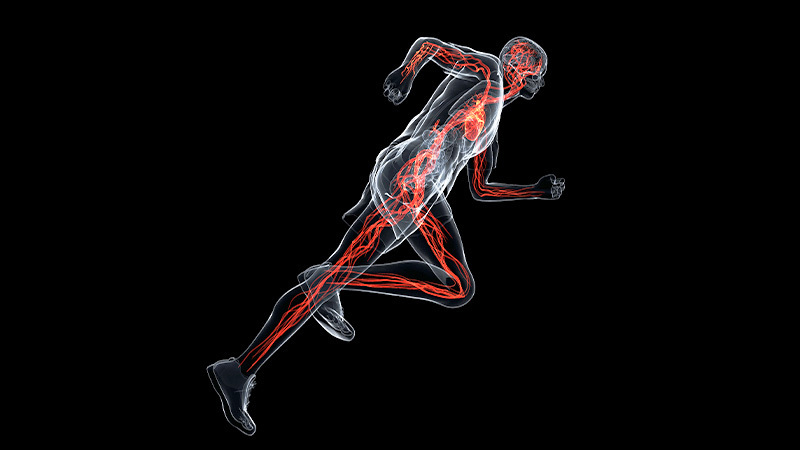The J-CONFIRM registry showed that patients with chronic coronary syndrome (CCS) who received guideline-directed medical therapy (GDMT) after fractional flow reserved-based (FFR-based) deferral of revascularization had better outcomes than those who received suboptimal GDMT, according to a presentation by Dr. Masanobu Ishii of Kumamoto University at the Hot-line Session at the 86th annual meeting of the Japanese Circulation Society.
The Impact of Continuing Guideline-Directed Medical Therapy on Prognosis After FFR-Based Deferral of Revascularization: Insight from the J-CONFIRM Registry

The J-CONFIRM registry enrolled 1,263 patients (1,447 lesions) from 28 centers in Japan between September 2013 and June 2015 with FFR of contrast-enhanced moderate coronary artery stenosis and defer revascularization. The 5-year TVF rate was reported to be 11.6%, with only a few cardiac deaths and target vessel-related MIs. This study examined whether GDMT improves long-term outcomes in 1,113 CCS patients from the J-CONFIRM registry with completed 2-year follow-up.
OMT Definition 1: Anti-platelet Therapy (Aspirin, Thienopyridine), Calcium Channel Blockers (CCB), Nitrates, β-blockers, and Statins
In Definition 1, patients who were using ≥4 agents were considered in the optimal GDMT group (161 patients) while patients who were using ≤3 agents in the suboptimal GDMT group (952 patients).
Patients in the optimal GDMT group were more likely to have hypertension, dyslipidemia, a history of MI, PCI, or CABG, as well as in-stent restenotic lesions and two-vessel lesions than those in the suboptimal GDMT group.
The use of antiplatelet agents, β-blockers, CCBs, statins, and nitrates was significantly higher in the optimal GDMT group, and factors associated with optimal GDMT included dyslipidemia (OR 2.34 [95% CI 1.51-3.62] p<0.01), prior PCI (OR 2.85 [95% CI 1.83-4.46] p<0.01) and history of CABG (OR 3.12 [95% CI 1.18-8.20] p=0.02) were identified.
OMT Definition 2: Anti-platelet Therapy (Aspirin, Thienopyridine), ACE inhibitor/ARB, β-blockers, and Statins
In Definition 2, patients who were using 4 drugs were classified as the optimal GDMT group (139 patients), while patients who were using ≤3 drugs were classified as the suboptimal GDMT group (974 patients).
Patients in the optimal GDMT group were younger, had a higher BMI, and a higher percentage had hypertension, dyslipidemia, MI, PCI, heart failure, and atrial fibrillation, and had a lower LVEF compared to the suboptimal GDMT group. There were no differences in lesion location or target disease variables.
The use of antiplatelet agents, ACE inhibitors/ARBs, β-blockers, and statins was significantly higher in the optimal GDMT group, while the use of CCBs was higher in the suboptimal GDMT group. Factors associated with optimal GDMT included dyslipidemia (OR 2.33 [95% CI 1.37-3.97] p<0.01), previous MI (OR 2.51 [95% CI 1.57-4.00] p<0.01), previous PCI (OR 4.53 [95% CI 2.35-8.73] p<0.01), LVEF≤40 % (OR 2.62 [95% CI 1.10-6.24] p=0.03) and LM lesions (OR 3.50 [95% CI 1.11-11.1] p=0.03).
Association of Major Adverse Cardiac Events (MACE) with Pharmacotherapy
In the Kaplan-Meier analysis of the OMT Definition 1, the rate of MACE from 2 to 5 years was 6.3% in the optimal GDMT group and 12.4% in the suboptimal GDMT group (Log-rank p=0.03, adjusted HR 0.48 [95%CI 0.25-0.96]). The risk of MACE in the OMT Definition 2 was 5.2% in the optimal GDMT group and 12.4% in the suboptimal GDMT group (Log-rank p=0.02, adjusted HR 0.41 [95%CI 0.18-0.92]), indicating a lower risk of MACE in the optimal GDMT group by either definition.
The subgroup analysis showed that in both Definition 1 and Definition 2, the effect of optimal GDMT on MACE reduction was more pronounced in men, with an interaction between men and women (Definition 1: p interaction = 0.02, Definition 2: 0.03).
Dr. Ishii summarized, “Continuing optimal GDMT was associated with better outcome of CCS patients after FFR-guided deferral of revascularization than those with suboptimal GDMT. Our findings highlight the importance of achieving optimal GDMT on long-term outcomes in those patients.”
The 86th Annual Scientific Meeting of the Japanese Circulation Society
ご注意 当サイト内の全ての記事と動画の転載・転送はご遠慮ください。なお、法律上保護されたコンテンツの無許可の転載、複製、転用等は、当該コンテンツの権利者等から損害賠償請求その他の法的手続を申し立てられ、事案によっては処罰される可能性、また、故意にそれらを受け取った場合も同様の措置を受ける可能性がございます。ご不明な点がございましたら当社までご連絡ください。




